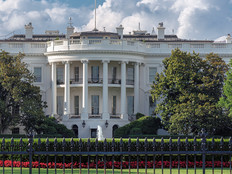White House Wants GEAR Initiative to Spark IT Modernization
Washington, D.C., is filled with think tanks. The White House does not want another one, and does not expect its proposed Government Effectiveness Advanced Research Center to be a typical research center.
Instead, the Trump administration wants the GEAR Center to serve as a catalyst for actual pilot programs agencies can use to spur IT modernization. The administration is currently digesting responses it received to a request for information from the private sector it put out in July on GEAR.
GEAR was part of the administration’s wide-ranging government reorganization plan, and is one that would not require approval from Congress to set up. Margaret Weichert, deputy director of management at the Office of Management and Budget, said last month that the administration does not want bureaucracy to impede its efforts to deliver better services for citizens, Nextgov reports.
The GEAR Center would be a public-private partnership that would bring together “experts from disciplines ranging from behavioral economics, to computer science, to design thinking, in order to take a creative, data-driven, and interdisciplinary approach to imagining and realizing new possibilities in how citizens and government interact,” the reorganization plan states.
“Collaboration and co-creation are part of the norm of how people do business in the 21st century,” Weichert said in late August on a phone call with reporters and potential vendors. “We want to … make that a possible reality for government.”
VIDEO: Find out how NASA, ATF, SBA and NARA plan successful IT futures!
GEAR to Focus on Concrete Federal IT Modernization Projects
The GEAR Center is designed to fast-track private sector innovations in government technology. Weichert said the center will initially focus on key aspects of the President’s Management Agenda: IT modernization, cybersecurity, data management and workforce development.
The White House argues that the executive branch currently lacks the capability to work with state and local governments, businesses, and higher education institutions to assess the long-term strategic needs of government, and “to ‘test and learn’ how to apply innovative approaches to meeting the mission, service and stewardship needs” of the 21st century. “This capability is needed to effectively apply theory to practice in a low-risk environment,” the White House reorganization plan adds.
GEAR would give the government with the opportunity “to not only catch up to where the private sector services and capabilities are today, but to lay the groundwork for where Government operations and services need to be in five, 10, or 20 years or more.”
For example, the GEAR Center could examine the impacts to government that are likely to occur due to broader economic forces such as self-driving cars and automation, improving government services and exploring strategies to leverage big data and manage data as an asset across government silos.
Weichert stressed the GEAR Center is not a “think tank” in the traditional sense, according to Nextgov, and its will need to produce solutions that agencies can actually implement.
“We want to emphasize at the end of the day this is about applied research in the government context,” she said. “We don’t just want to have … written diagnoses. We want to have pilots.”
The GEAR Center is designed to spark innovation as an engine to transform the public’s experience with government. “Researchers will validate and/or develop improved ways to serve the needs and desires of the customers of Government services, and rethink the experience of Government-public interactions,” the White House plan says.
OMB Program Manager Mark Bussow says the administration has not yet decided if the GEAR Center will be in a physical building or a be composed of a dispersed consortium of experts, but that it is leaning toward the consortium model, according to Nextgov. OMB expects to begin formally setting up GEAR next year.









